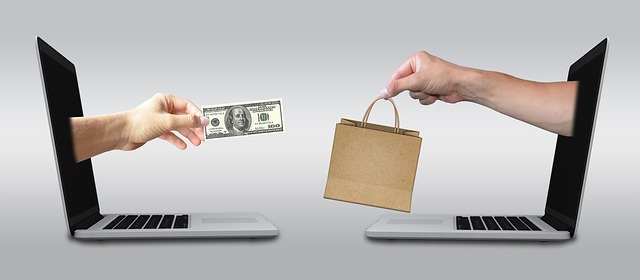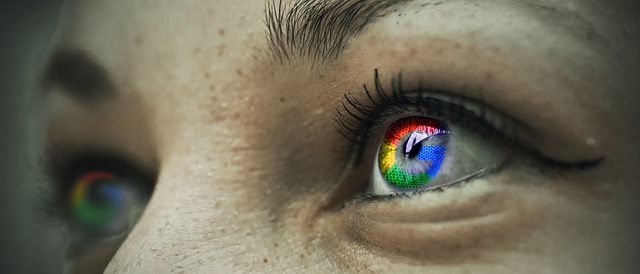The concept of user experience design – UX design – has become an increasingly popular topic in recent years. But what exactly is it? How does it fit into the broader field of design? How can someone go about beginning a career in UX design?
With the rise of digital technology in recent decades, the demand for digital product design that balances the user’s needs with business objectives has increased significantly. Companies are now investing in UX strategies more than ever before, and the need for UX designers is growing at a rapid rate. According to a study by the Association for Computing Machinery, 66 percent of companies now prioritize user experience in product design before they even start to think about the engineering and technical aspects. This highlights the need for UX designers to be aware of the business objectives when they design experiences for users.
In this article, you will learn the basics of user experience design; the importance of understanding business objectives, customer needs, and user behavior; and how to start a career in the field. We will explore the use of UX design techniques, such as user research, wireframing, and usability testing; and the importance of design thinking and collaboration when creating experiences for users. Finally, we will discuss the current job market for UX designers and the various roles they can fill.
This article will explore the fundamental aspects of UX design and provide guidance for how to enter this growing field. With the right knowledge, the potential is limitless for designers wishing to pursue a career in UX design.

Definitions
User Experience (UX) design is a process of designing and developing digital products and services that are usable, accessible, and enjoyable for the people who use them. It focuses on the user’s overall experience with a product, starting from the moment they first encounter it to the point they cease using it.
Usability: Usability is a key aspect of UX design and refers to the degree of ease a product has both in terms of how quickly and effectively it can be used and how intuitive it is to the user.
Accessibility: Accessibility is the degree of access and convenience a product or service offers to all users, regardless of their level of disability.
Enjoyability: Enjoyability in UX design refers to the degree of satisfaction a user has with a product. It is closely aligned with usability and is focused more on the emotional connection a user forms with a product during and after use.
User Research: User research in UX design is the practice of gathering data about users and their needs and preferences. This information is used by UX designers to inform their design decisions and ensure that the product fits the user’s needs and goals.
Prototyping: Prototyping is a process of creating the initial design of a product that is then tested and refined over time. It is a key part of the UX design process, as it allows designers to gain feedback and get a better idea of what works and what doesn’t before finalizing the product.
User Testing: User testing is the practice of using user feedback to refine a product’s design over time. It is a crucial part of the UX design process, as it allows designers to get feedback from actual users and make sure their designs are user-friendly and meet their users’ needs.
Introduction to User Experience Design
What is User Experience Design?
User experience design (UXD or UED) is the practice of making technology interfaces that provide meaningful and relevant experiences to users. It encompasses visual design, content, architecture, usability and interactions between users and the system. In the digital space, UXD is the art and science of crafting products that provide a positive, meaningful user experience.
UXD consists of three major elements: usability, desirability, and accessibility. Usability is concerned with the efficiency, effectiveness and satisfaction of a product. It focuses on creating a product that can be used quickly and easily by its user. Desirability focuses on the aesthetic appeal of technologies and how they can engage users and create a sense of self-expression, emotion and enjoyment for users. Finally, accessibility addresses the ability of a product to be used by people of all abilities and disabilities, including those with physical, psychological, and cognitive impairments.
Vital Components in User Experience Design
Creating an effective and enjoyable user experience requires attention to the following components of design:
- Usability: Usability relates to the ease of use of a product. A usable product must offer an intuitive user experience that allows users to complete their tasks quickly and without frustration.
- Desirability: Desirability is the aesthetic appeal of a product, making it attractive to users. It relies on visual design, content, colour schemes and user interactivity.
- Accessibility: Accessibility is about making products available for users with disabilities, either physical or cognitive, to be able to use them and enjoy the same features as all other users.
- Functionality: Functionality refers to the features of a product. The functionality of a product should make the user experience easier and more enjoyable.
- Brand Impact: The brand impression of a product affects the user experience. Products should be designed to reflect the brand’s values, positioning and identity.
In addition, UXD also includes user research, user testing, prototyping, and the evaluation of products. These steps help to ensure that the product meets the needs of users and offers a positive user experience.
Through UXD, products offer meaningful and relevant experiences to users, making them more enjoyable and easier to use. By creating products that meet the needs of users, brands can establish strong, positive relationships with their users.
Understanding the Principles of User Experience Design
User experience (UX) design is an important process that creates a bridge between a company’s product or service and the end user. It involves understanding not only the functionality of a product, but also the user’s needs, behavior, emotions, and expectations. Developing great user experience requires a holistic approach which covers everything from how the product looks and feels to the way someone interacts with it. By understanding the principles of UX design, companies are able to create compelling products and services that are user-friendly, intuitive, and enjoyable to use.
User-Centered Design
User-centered design (UCD) is an essential part of UX design. UCD focuses on creating products and services that are tailored to meet the needs of the user, while also meeting the company’s business goals. To develop a user-centered product or service, companies must first research their target audience and gain a deep understanding of how they interact with the product or service. This research is essential for UX designers to ensure that they create products and services that the user will find intuitive and easy to use.
Visual Design
The visual design of a product or service plays a significant role in how a user experiences it. A good visual design can help make a product look visually appealing, while also making it easy for the user to interact with it. It is important to remember that visual design is not just about aesthetics – understanding and using visual design principles, such as color theory, typography, and composition, can help make a product easier and more enjoyable to use.
Creating an effective user experience requires a combination of user-centered design, visual design, and other design practices. UX designers must think holistically and combine different elements to create a product or service that is tailored to the user’s needs and is enjoyable to use. Although understanding the principles of UX design is important, it is also essential that UX designers continuously test and refine their designs in order to ensure that the end result is the best it can be.
Tools and Techniques Used in User Experience Design
User Experience design is the practice of crafting user experiences by studying user needs and preferences, and using different design techniques that consider the user’s perceptions and experiences in the context of a product or service, website, or application. This process involves the creation of a user interface, which is composed of features such as navigation, content, user controls, and multimedia, as well as the design of a physical or digital object that allows the user to interact with the interface. There are several techniques used in User Experience design which can help create the best user experience possible.
Understanding User Needs
Before any design process, it is essential to understand the user needs, motivations, and goals. There are several methods that can be used for this, such as surveys, interviews, focus groups, and usability testing. These help designers to understand their target audience and identify any issues or problems that need to be solved. It is also important to recognize any trends in users’ behavior and put this knowledge into practice in order to make the user experience more enjoyable.
Design Thinking
Design thinking is a process of solving problems in a creative way. It involves a cyclical process of ideation, prototyping, testing, and iteration. This process helps the user to gain insights about the user’s needs and preferences through interactive and visual experiences. Designers use the results from the design thinking process to create the best user experience possible. By understanding the user’s goals and behaviors, they can create a user interface that is easy to use and provides an enjoyable experience.
Wireframing and Prototyping
Wireframing is the process of creating a visual representation of a user interface. It is used to layout the user interface elements such as navigation, content, user controls, and multimedia. This helps designers to visualize the interface, and it can be used as a starting point for prototyping. Prototyping is a process where a working version of the user interface can be tested and iterated upon. This helps designers to refine the design and achieve the desired goals of the user experience.
Using traditional art skills such as sketching and illustration can also help designers to express ideas, present solutions, and visually communicate the user interface. This can help to visualize concepts and provide an easier way to communicate with stakeholders.
The user experience design process is a continuous cycle of learning, ideation, prototyping, and testing. By understanding users’ needs and preferences, designers can create an interface that is enjoyable and easy to use. Designers use several techniques such as understanding user needs, design thinking, wireframing, and prototyping, as well as traditional art skills such as sketching and illustration, to create the best user experience possible.
Conclusion
The concept of User Experience design can be intimidating to newcomers. How can one start navigating this field? To successfully launch a career in User Experience design, there are certain steps one should follow. It’s important to research the latest trends, familiarize yourself with existing tools and techniques, explore and experiment, practice and build skills, and connect with other professionals in the industry.
These steps should be helpful, but keep in mind that this is by no means definitive. Join our blog to learn more, and stay tuned for the latest releases.
To assist your journey, here are a few FAQs related to User Experience design:
Q1. What are the essential skills needed for User Experience design?
The skills required for User Experience design include user research, visual and interaction design, user interface design, interaction design, prototyping and architecture design. In addition, an understanding of product development processes, user psychology, user-centered design, and ergonomics are essential.
Q2. What types of tools are used for User Experience design?
When it comes to User Experience design, tools such as Adobe Photoshop, InVision, Sketch, Balsamiq, Axure, and Adobe XD are often used. Each of these tools has different functions and capabilities, so it’s important to determine which one is the most suitable for your project.
Q3. What are the different types of User Experience design?
User Experience design can be broken down into a number of different categories, including task-based design, heuristic design, iterative design, navigational design, information design, and contextual design. Each type of design has advantages and disadvantages, so it’s important to understand the basics of each before making a decision.
Q4. How important is design in User Experience?
Design plays a critical role in ensuring a successful User Experience design. User Experience design should be focused on creating a holistic experience for users, with a strong emphasis on making the design as efficient and appealing as possible. This requires an understanding of best-practice design techniques and principles, coupled with creativity and problem-solving skills.
Q5. How do User Experience design and User Interface design differ?
Although User Experience design and User Interface design are closely related, there are some important differences. User Experience design focuses on the overall user experience, while User Interface design deals more specifically with the visual design of a product. An effective User Experience design should be supported by an equally effective User Interface design.



